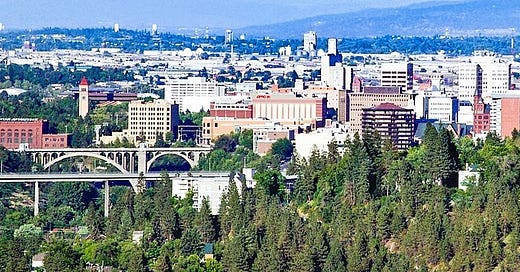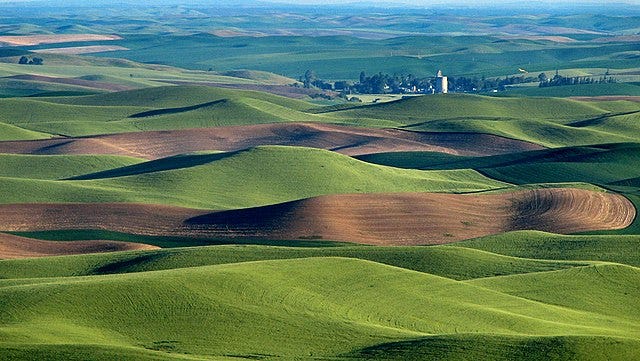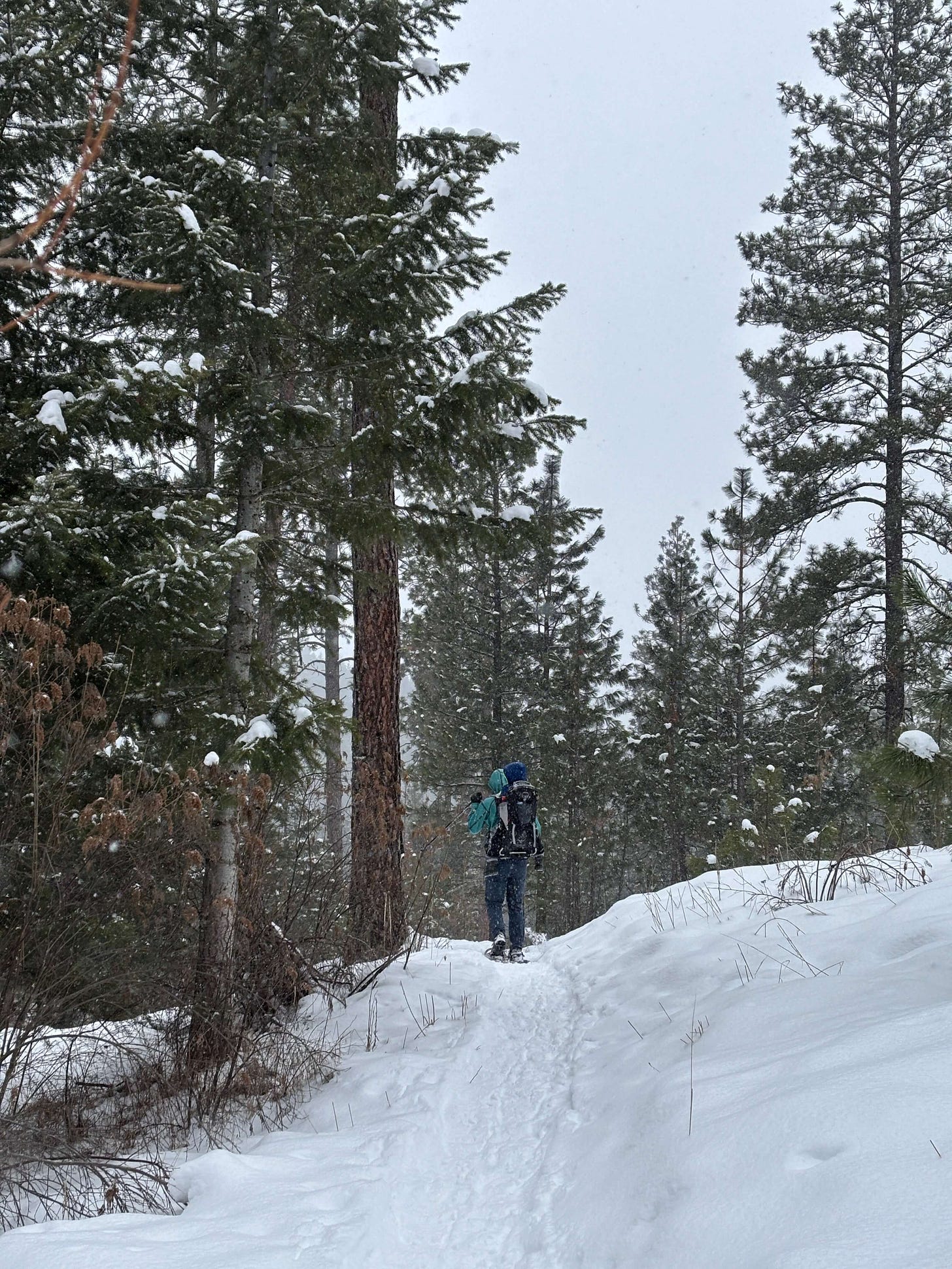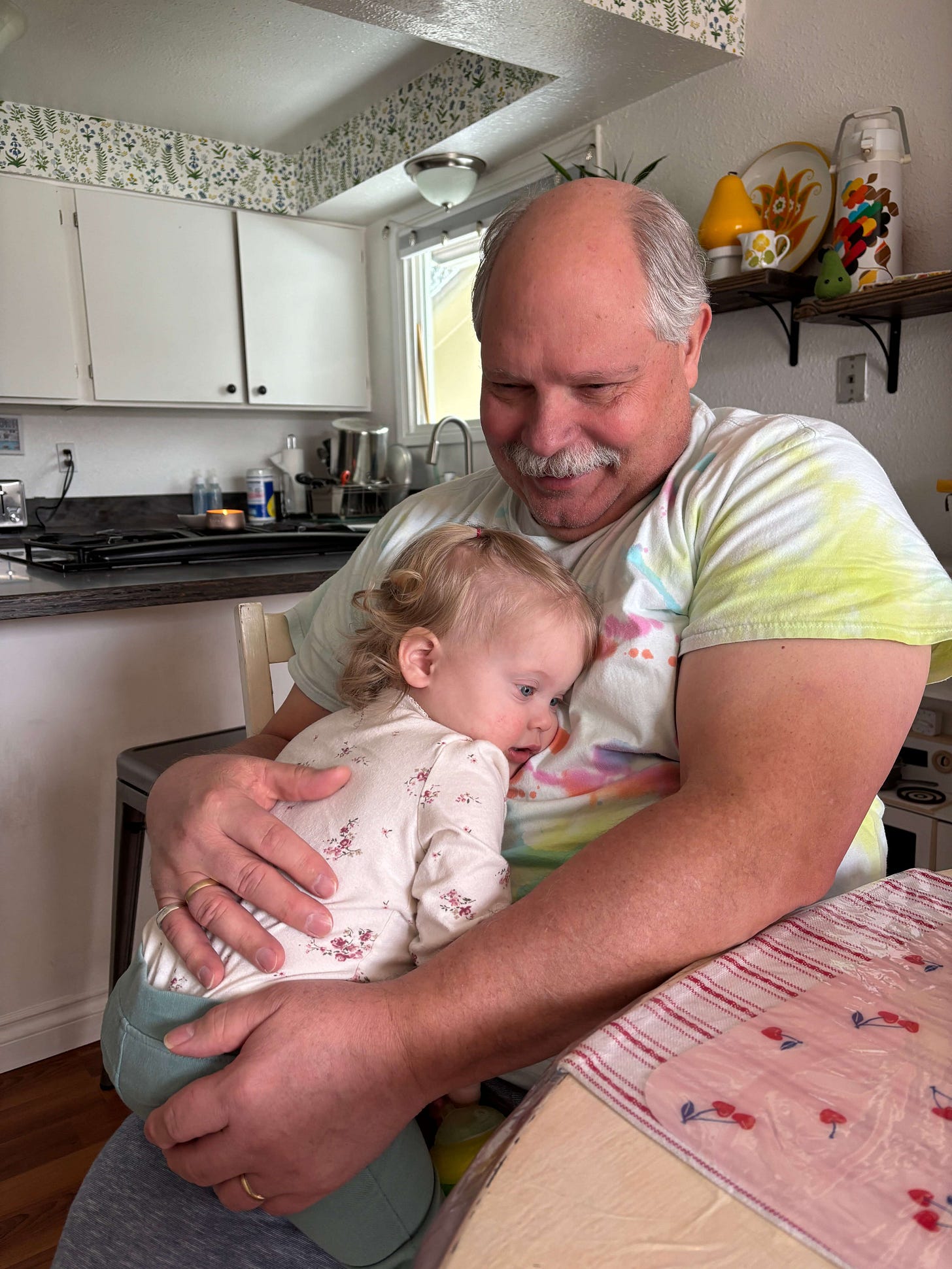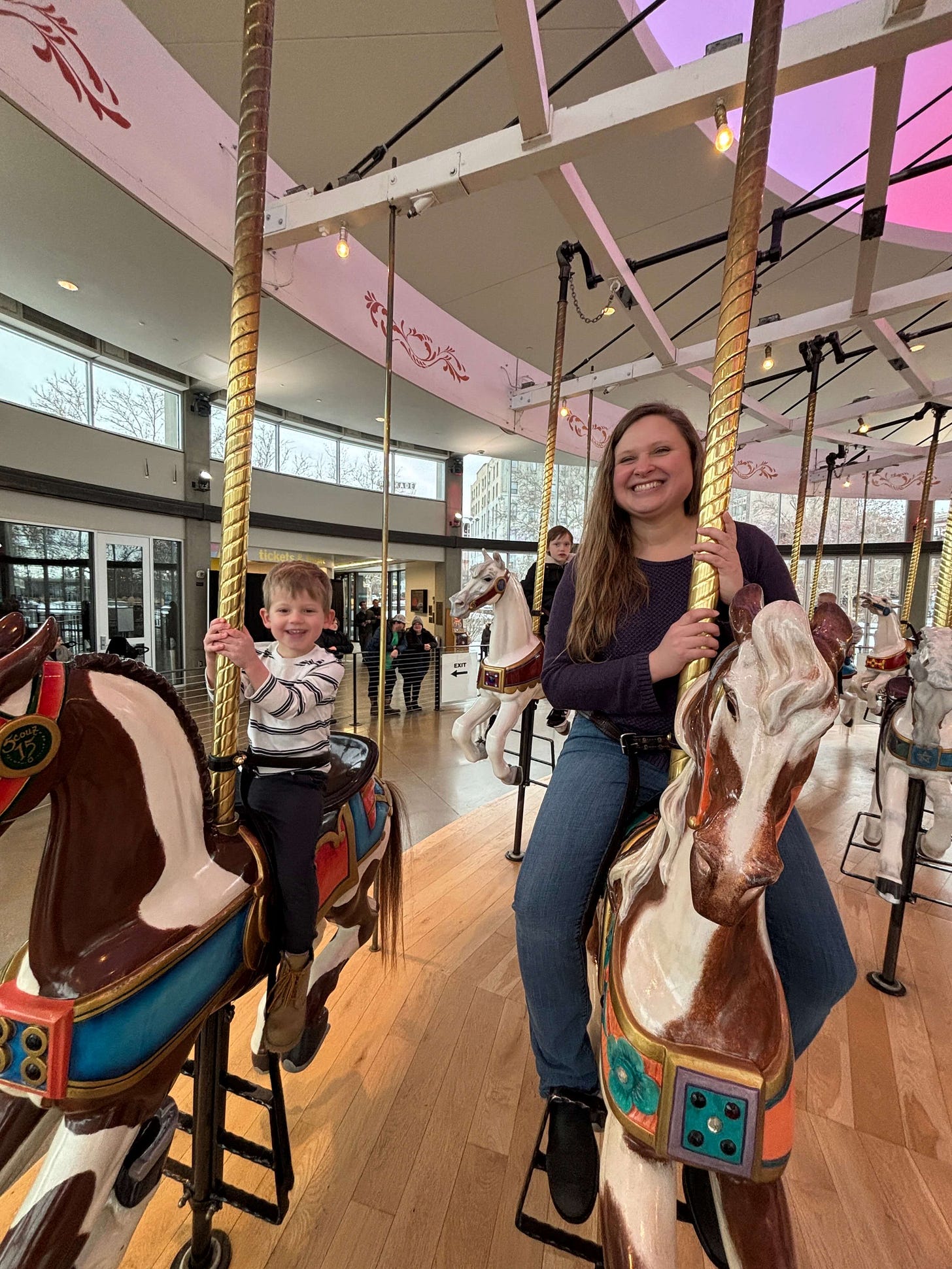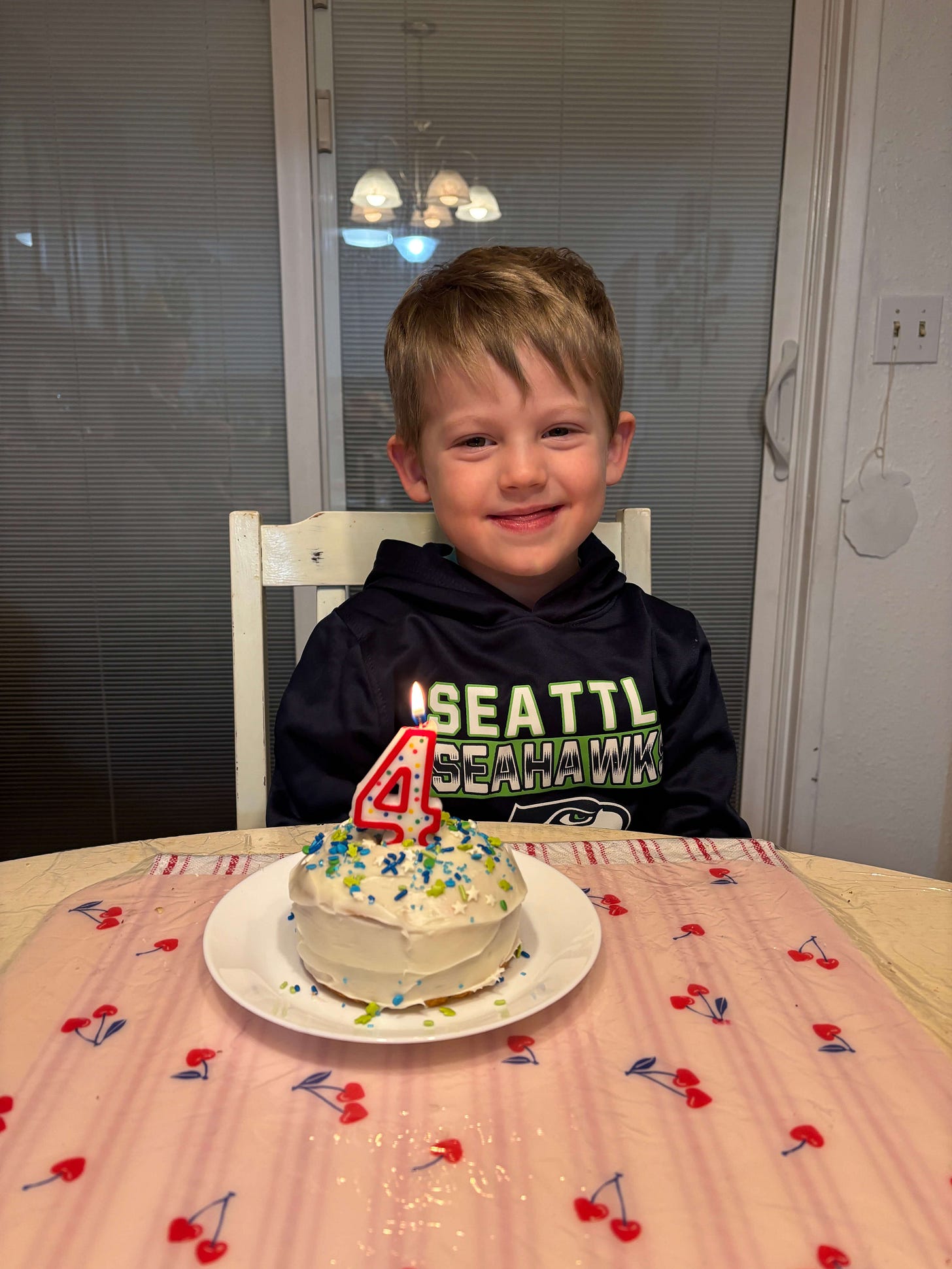You’re reading From the Desk, a monthly newsletter from Miles Farnsworth about the arts, spirituality, and living the good life. Scroll to the bottom to see Recs from the Desk and 5 Photos from the Last Month.
Consider subscribing to read From the Desk in your inbox.
It’s officially been a year since we moved to Spokane. Though familiar in name, before moving here, Spokane was just a random little city tucked away in Eastern Washington near the Canadian border. Unless you’ve visited or grown up here, I imagine your perception of Spokane was about the same as mine.
After a year in the city, I feel compelled to grab my pom-poms and do a little cheering for my new home, to share its character, uniqueness, and virtues (I’ll try to be fair about its vices, as well).
This post will include a brief history and detail other aspects of life in Spokane, but so that I don’t bury the lede too far, let me list, in quick succession, some of the things I love most about Spokane.
The dramatic landscapes—rivers, hills, gorges, and bluffs.
The mix of architectural styles, from classic craftsmen to mid-century modern.
The towering lodgepole pines that frame the neighborhoods.
The ease of access—whether to a quiet airport, a grocery store, or downtown.
A thriving arts scene with independent galleries, independent movie theaters, good museums, and local creators/markets.
An abundance of outdoor spaces, from hiking and biking trails to stellar parks.
Quirky and quality thrift stores.
Our welcoming church community and that people in Spokane are friendly.

Facts and History
Spokane is the most northern city in the Continental United States with a population over 200,000, just a few hundredths of a degree more north than Seattle. It’s even further north than Quebec. As the 97th largest city in the USA at 229,000 people, it anchors the 70th largest Combined Statistical Region, an area stretching eastward to Coeur d’Alene, ID, a population of 785,000 people.
Spokane sometimes feels like a PNW city, especially when it’s rainy and overcast, and on days like these, the grungy, tattooed, hipster contingent you find about town seems to fit right in. In other ways, Spokane shares more characteristics with the Mountain West, particularly Idaho and Montana, but also Colorado and Utah with hot, dry summers, a little bit cowboy, a little bit Route 66.
Unlike most of its larger neighboring cities, Spokane has not transformed into a technology hub, and in many respects, it remains a working-class, blue-collar city. Healthcare, manufacturing, and agriculture still make up many jobs. Compared to Seattle, Portland, Salt Lake City, and Boise, Spokane has a lower median household income, a slightly higher poverty rate, and fewer bachelor degree holders.
If I were to compare Spokane to other cities in the United States, I’d choose river cities like Pittsburg, PA (blue-collar, overcast winters), Providence, RI (artsy, historic neighborhoods, creative economy), and Richmond, VA (sizable student population, strong city center, historic).
As a city, Spokane bloomed quickly. In 1880, it had just 350 residents. By 1910, it had exploded to over 104,000, making it the 48th largest U.S. city at the time. Its growth was driven by three industries—farming, logging, and mining—none of which were actually extracted/produced in Spokane. Instead, Spokane became the rail hub, the center point of commerce and distribution for the region. The banks, company headquarters, hospitals, and arts all lived in Spokane and served the Inland Northwest.
This early boom shaped Spokane’s character in at least three lasting ways: 1) a surprisingly large downtown that still functions as the economic, health, and cultural center of a vast geographical region, 2) an impressive stock of historic buildings both downtown and in the surrounding neighborhoods, 3) an ambitious parks system designed by the famed Olmsted Brothers, sons of Frederick Olmstead Sr. who designed Central Park. In 1907, Spokane hired the brothers to create a city-wide parks plan, and many of the suggestions were adopted, giving Spokane abundant green space.
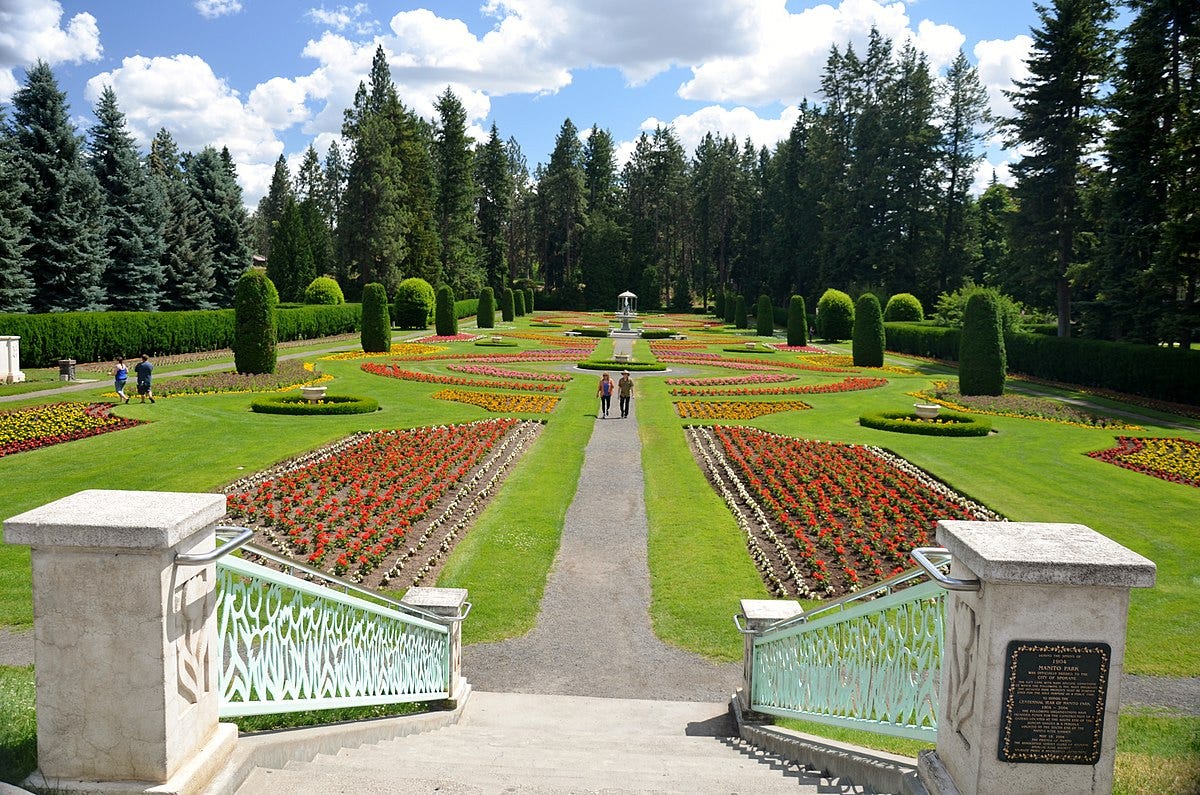
There’s one more significant piece of Spokane history worth mentioning: the 1974 World’s Fair. Spokane likes to brag that it is the smallest city to host a World’s Fair. The whole event revolved around environmental rejuvenation, something Spokane desperately needed, particularly the Spokane River.
The center of Spokane’s rail operations had grown to occupy an island in the middle of the river immediately adjacent to the downtown. Combined with the toxic minerals dumped upstream in Idaho mines and the rather late arrival of a sewage treatment center, the Spokane River was one of the most polluted rivers in the country.
Furthermore, the rail yard masked what should have been Spokane’s premier natural feature, the large waterfalls that cascade on either side of the islands (these happen to be the largest urban waterfalls in the country).
As part of the World’s Fair, a group of businessmen and civic leaders pulled off a remarkable transformation, clearing out all but a clock tower from the island and turning the entire area into Riverfront Park, home to gondolas, a carousel, playgrounds, viewing decks, and more.
Climate and Geography
Spokane weather fluctuates between two extremes. Summers are hot and dry, though the nights cool off below the 70s, making for pleasant evenings on the porch and cool mornings for exercising. This summer, a few weeks pushed 100+ degrees, which got a little brutal in the afternoons. Often, wildfire smoke accompanies the heat.
The winters are overcast and cold but not so freezing as to be compared with the Midwest or even the Northeast. Most days get above 32 degrees at some point, and the snow comes and goes like it does in Mountain West cities, probably sticking to the ground less than it used to.
Spokane isn’t large enough to merit mention in lists about how cloudy it is in the winter (Seattle’s notoriously gloomy weather steals the spotlight). However, Spokane is among the most overcast cities in the United States. Look at this chart comparing it to other infamously cloudy US cities (look at each end of the chart, where the winter months have less than a 30% chance of sun on any given day). I’m not exaggerating when I say I saw my shadow only twice this last November.
Geographically, Spokane resides at the confluence of several regions. To the west is the arid, flat Columbia Plateau, an area so boring it rivals the worst of Kansas. To the east, the pines get thicker by the minute, and before long, you’re truly at the foot of the mountains in the Idaho Panhandle. Mountains extend to the north as well, and from certain vistas, you can begin to appreciate their grandeur, though none are so close as to make Spokane feel like a true mountain town. To the south, the Palouse, a region of hilly farm country, stretches to the Snake River, home to towns like Pullman, WA, and Moscow, ID.
As far as the outdoors are concerned, it’s a bit of a dream. There are five ski resorts within a 90-minute drive, dozens of little lakes, a 64-mile walking/biking trail that bisects the city, and hundreds of miles of mountain bike and hiking trails. It’s also worth remarking that Spokane is a day’s drive from a number of national parks, being less than 300 miles from Mount Rainier, North Cascades, and Glacier, as well as Kootenay and Yoho in Canada, and less than 450 miles away from Olympic, Yellowstone, and Banff in Canada.
Daily Life
As you probably gleaned from my list, I’m a fairly simple man when it comes to my desires for daily amenities. Spokane has been great because we live so close to everything. I can walk to the library, Church, and even the grocery store if needed. I’m a few minutes’ drive from Trader Joe’s, a used bookstore, and trail running spots. If I want to be in the city, it’s a 10-minute drive. Downtown, I can find restaurants, art galleries, movie theatres, cool stores, and more.
Of course, a lot of this is dictated by neighborhood. Spokane is one of those cities where the whole vibe can change in a matter of blocks. There are historic tree-lined streets dotted with little free libraries and bakeries, tight streets of WWII brick homes, 1970s-80s neighborhoods with shopping centers and strip malls, new developments on the outer rings of city limits with uniform homes, and some neighborhoods on the rundown side. But unless you live downtown, many neighborhoods are sleepy, and the traffic is funneled through designated arterials that keep the residential streets quiet.
I’ve talked about the good; what about the bad?
Like many Western cities, Spokane has a sizeable homeless population, contained mostly in a few pockets. Fentanyl is a major issue. Because it’s not a big city, the line between nice and not-very-nice changes quickly. Homelessness aside, there’s also just a certain variety of white trash, one specific to the PNW, to be found around Spokane. If you know, you know.
Because of where it’s located, its history, and its odd growth, Spokane has a diverse political spectrum. Certain neighborhoods are very blue, and outside the city in the suburbs, things get conservative in a hurry. Out and about in Spokane, you’ll see rainbow flags and Don’t Tread on Me flags, Subarus and jacked-up trucks, waxed mustaches and “tough guys” in camo and Oakleys. I do y see this as a bad thing, necessarily, but if you want to live somewhere distinctly of one political variety, Spokane isn’t the place. For what it’s worth, I’ve never heard a political statement uttered at Church in the last year.
I’ve come to see Spokane as a city that has just a little bit of everything with mild extremes, if you will. That’s true of the neighborhoods, the polar opposite seasons, the pockets of wealth and poverty, the mix of red and blue in one place. In Spokane there’s enough variety that you can choose exactly the kind of life you want to live.
All of this adds up to making Spokane an interesting place. Its amalgam of character and history makes it one of a kind, and the charm and the grit are somehow necessary to creating a city people are proud of and seek to improve.
This, in conclusion, is what I love most about Spokane. I love living in a place that is uniquely itself. I like that it doesn’t feel like a cookie-cutter suburb. I like that we fly under the radar.
Something to look at: A walk in time through the Southwest via the photographs of Frederick Monsen.
Something to watch: No Other Land, a documentary about a Palestinian village slowly demolished by the Israeli Army. Also an Oscar winner! All events take place prior to the Oct 7 Hamas attacks.
Something to read: A review of a certain strain of contemporary novels. Funny, honest, and a good excuse for me to never read these books.

